In India’s diverse country, one will need a long time span to see all the famous fairs of India has. Every month has at least one reason to celebrate and you would not want to trade those celebrations for anything in this world.
Every historical event, every season, every victory is celebrated and some have grand celebrations that it turns into the largest of gatherings in the whole wide world. Here are a few of these; famous fairs of India.
Kumbh Mela

One of the largest fairs of India, Kumbh mela is celebrated every 12 years at four places- Prayagraj (Allahabad), Haridwar, Nashik, and Ujjain. Pilgrims mark it by a ritual dip in the rivers of the places it takes place.
There are other things like mass feeding of monks, education and religious discourses by saints, and other entertainment activities.
The legend of Kumbha mela can be found in the Hindu scriptures, the story of Gods and demons fighting for Amrita Kumbh (elixir pot).
The 2019 kumbh mela had approximately 150 million pilgrims.
Sonepur Mela
Sonepur mela is a cattle fair held in Bihar on the confluence of river Ganges and Gandak. It is the biggest cattle fair in Asia.
A variety of farm animals are brought to trade like buffaloes, donkeys, goats, horses, elephants, and camels. The trade of elephants has been prohibited since 2004 now.
There are other stalls put up in the fair for handicrafts, weapons, furniture, toys, and utensils. The fair begins in November on Kartik Poornima and ends in December.
Hemis Gompa Fair

The Hemis gompa fair is celebrated annually at the birth anniversary of Guru Padmasambhava at the Hemis Monastery, Ladakh. It is a more than 300 years old fair, depicting the beautiful Buddhist culture and craft.
There is dance, music, handicrafts being sold along with Tibetan jewelry and hand-woven clothes.
The music is played using horns and cymbal made instruments. The fair is held on the tenth day of the Tse-Chu month of the Tibetan calendar that falls around June.
Pushkar Fair
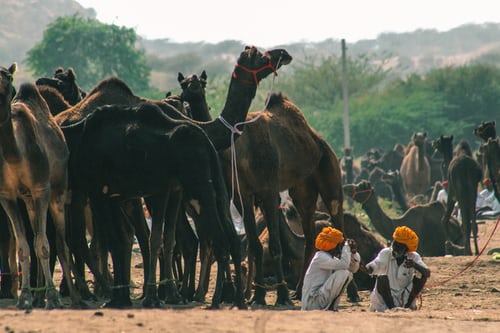
Pushkar Fair or Camel Fair, Rajasthan famous for livestock trading. It starts at the beginning of the Kartik month and ends in fifteen days at the Kartik Poornima; which falls in November.
It is held at the banks of picturesque Pushkar lake and hence also become a pilgrims season along with the cattle fair.
Visitants enjoy the camel races, camel rides, desert safari, camel dance, Matka phod competitions. The people are adorned in colorful attires and beautiful jewelry. You can find stalls of fine fabrics, traditional attires, jewelry, and intricate artworks for sale.
Chandrabhaga Mela
One of the vastly celebrated festivals of Odisha, Chandrabhaga mela is held on the seventh day of Magha, and hence it is also called the Magha Saptami Mela.
Pilgrims take bath in the Chandrabhaga river, now reduces to a pond in Odisha. After the holy dip at the river, people head to the Konark temple to offer prayers to Sun God.
It is believed and thousands visit the mela to cure their ailments that they are suffering from. The fair also has vendors selling their handicrafts, traditional items, and various other things.
Surajkund Craft Fair
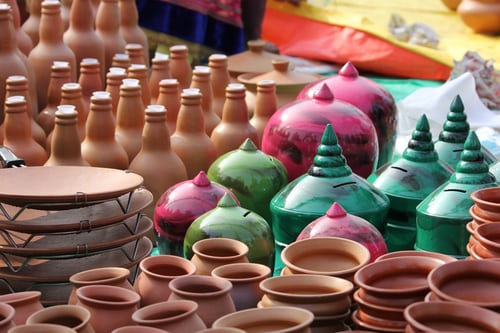
A vivid celebration of Indian culture, cuisine, and artisans, Surajkund is one of its kind fairs. The fair is one of the largest celebrations that is stretched at a fortnight in February.
The fair is held in Faridabad, Haryana and every year a different theme is selected for the fair.
The festival is full of rich national and international crafts and traditions, multi-cuisine, a splash of vibrant colors, mesmerizing performances, and joyful music.
Tarnetar Mela
A famous tribal fair of Gujarat, Tarnetar mela is a marriage mart. Swayamvars are held where tribal men come dressed articulately with intricately embroidered umbrellas to be chosen by the tribal women for marriage.
The men are chosen by women according to the most beautiful umbrella they find.
Besides the fair also has cultural events, folk music, and dance performances for entertainment.
Gangasagar Mela
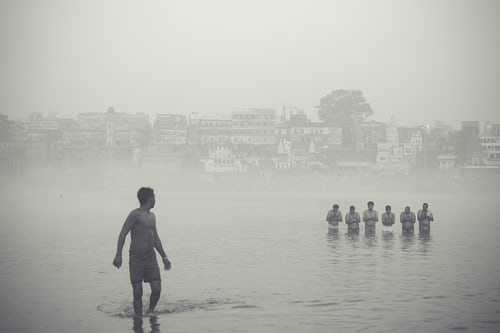
It is the second-largest congregation after Kumbh mela. The religiously famous fair of India is held annually at the holy river Ganga where it meets the Bay of Bengal.
Pilgrims take a holy bath in the river at the confluence called Gangasagar as the river meets the Bay of Bengal.
The Kapil Muni temple near the confluence is where people finish their rituals by worshipping.
Conclusion:
The fairs in India show the rich culture and variety of colors that the country has. The reason for the fair could be one but over the years it has also become a reason to meet people to celebrate the togetherness along with the culture, to celebrate occupations, history, and love.
Thanks.










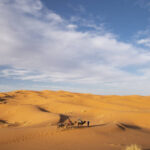
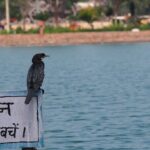


1 Comment